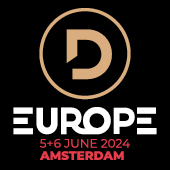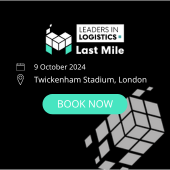Interview - SwipBox launches new battery guarantee and predicts strong 2022/23
%20Swipbox%20(800x536).jpg)
Danish parcel locker manufacturer SwipBox has launched a new 10-year battery guarantee for all new lockers as it strengthens its commitment to offering the best return on investment and to reducing total cost of ownership for its customers, revealed CEO Jens Rom in an exclusive interview with CEP-Research.
All new lockers delivered from November 2022 onwards will now be supplied with a 10-year battery guarantee. Existing lockers already deployed are not covered by the guarantee.
“We know that the batteries in our lockers will last 10 years, but there has been a lot of scepticism in the market about this claim so we thought we would put our money where our mouth is and offer the guarantee, so our customers don’t need to worry about it anymore,” Rom explained.
“If, for some reason, the battery stops working before the 10 years is up, then we simply replace it. The batteries are easy to replace – they click off and a new one clicks in – so it’s a fast process and something that anyone can do,” he added.
Low TCO
The new 10-year battery guarantee is part of SwipBox’s overall strategy to ensure its customers have the lowest possible total cost of ownership for its lockers. “There are a number of elements that go into this,” said Rom. “First, installation costs can be quite significant. Our Infinity lockers, however, have been designed to be installed in less than 10 minutes and don’t require power or Wi-Fi or mobile connectivity, which keeps installation costs down. They basically just need a flat surface.
“Second, our lockers are manufactured in a way that no scheduled maintenance is needed. All customers need to do is visit the locker once a year to clean it. All the parts will last 10 years without maintenance,” he continued. “This includes the battery, which is why we have launched the new guarantee.”
The batteries are sourced from an external supplier, according to Rom, and have been tested extensively using simulation to emulate real world conditions over 10 years of use. “Our first lockers were installed in March 2019, so we don’t have lockers out there that prove the batteries will last 10 years,” Rom commented. “Instead, we have used external bodies to test them to ensure durability.”
The CEO stressed: “We’ve done several tests and are more than sure that the battery lasts.” With more than 400 lockers north of the Arctic circle, SwipBox also tested to ensure that the batteries work as expected in extreme temperatures.
SwipBox is also set to launch a new light beam, which can be installed on lockers in areas where light is an issue. “And like the battery, it will also last 10 years. It uses very efficient LED lights and is Bluetooth enabled, meaning it only activates when someone interacts with the locker, rather than using a motion sensor, which could drain the battery quickly as it would light up every time a car or animal passes,” Rom explained.
Positive growth rate
The launch of the new 10-year battery guarantee follows an extremely strong 2021 and 2022 for SwipBox, and the development of other new products to help its customers overcome a number of pain points in their operations.
Earlier this year, the firm confirmed that it was on track to deliver 15,000 lockers in 2022, up from a record breaking 10,000 in 2021, but according to Rom, “it will be slightly higher than this.” This is thanks to several new large contracts.
Looking ahead to 2023, Rom said: “We are hoping to grow at the same rate as we did this year and the year before. We see no reason why the growth trajectory shouldn’t continue – we have lots of interest in our products all the time. We see growth coming from the sale of our Infinity locker, first and foremost, but we also have great hopes for a new product called Location Generator, which was launched last month.”
Finding locations
The Location Generator is an AI-based self-training tool, which has been designed to help companies find the right locations for their parcel lockers. It brings together public data sources, parcel heat maps, Google Street View, and other sources, to present customers with a number of good options for locations and aims to make network planning much more efficient.
The Location Generator tool was revealed following the launch of SwipBox’s new circular packaging solution, named SwipBox Circuit, which according to the firm can be reused up to 1,000 times. With the Circuit solution, consumers remove their contents from the locker and leave the packaging behind for the courier to return.
“The potential for further expansion is huge”
Looking at the parcel locker market in general, Rom believes that it will continue to grow over the next few years because it offers consumers delivery convenience, and it is a low-cost delivery options for couriers.
“Lockers currently represent such as a small part of the delivery sector,” he explained. “It is about 3-5% at the most. There are, of course, countries which have much larger networks, such as Poland, and in the Nordics, but looking across Europe the potential for further expansion is huge. Customer ratings for parcel lockers are the highest customer ratings you get from any delivery channel. Add that to the fact that our customers tell us lockers are the cheapest delivery method then there is no reason why lockers’ percentage of the delivery sector shouldn’t continue to grow.
“But where it ends, who knows! It could take another 10-20 years before we see the full potential of lockers,” Rom added.
Dense networks
The Swipbox chief executive believes that low-cost, battery-powered lockers will be the preferred choice for outdoor, and maybe indoor, locker networks in the future, as they are “easy to install and low cost”.
He stressed: “This means you can create a very dense network, with lockers very close to the end user. And the denser the network is, the more convenient it is for the customer, and the more popular it is. The more popular it is, the more lockers are needed, so it becomes even denser. The demand just continues to grow.”
Carrier agnostic networks will also continue to prove popular, according to Rom, although “they will take some time to get off the ground,” he says. “We hear a lot of people talking about carrier agnostic networks and we believe it will be something we see more of in the future, because it is indisputably a good idea to utilise capacity across couriers.
“But we believe that most couriers would prefer to build their own networks first and then open it up to other players, so we think it will take a while before agnostic networks really take off. We have already helped build an agnostic network in Denmark, using our Infinity lockers, and it works extremely well,” Rom concluded.


